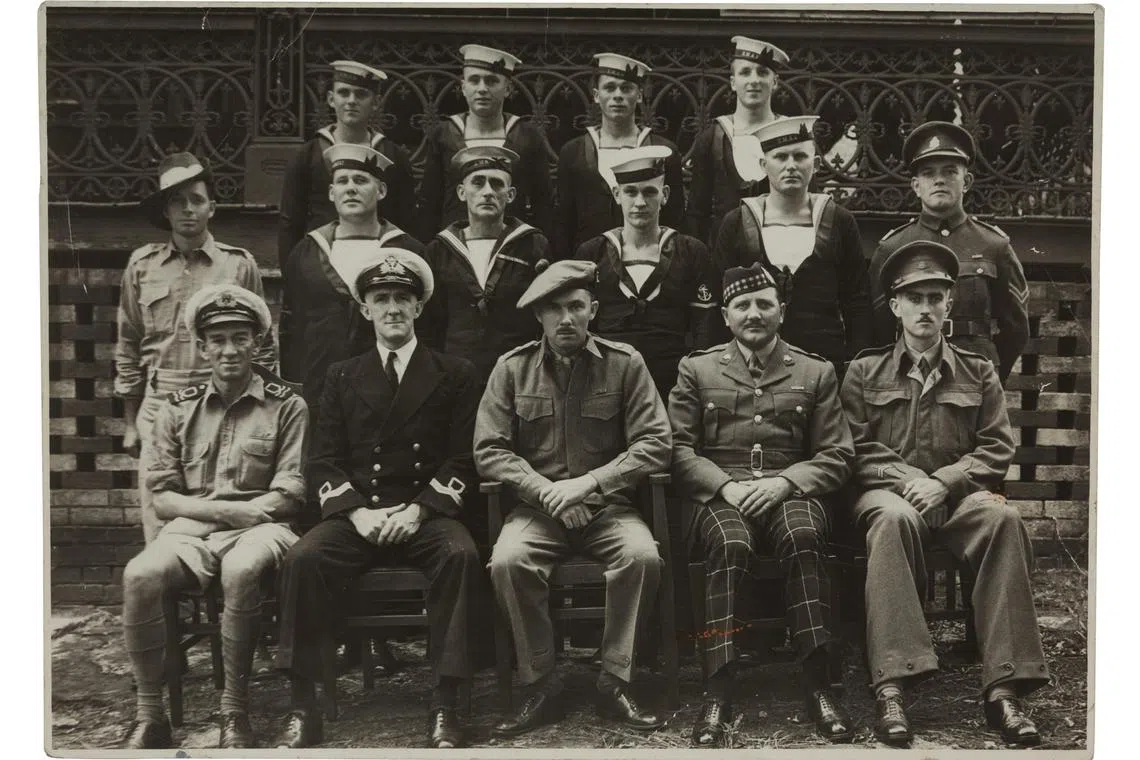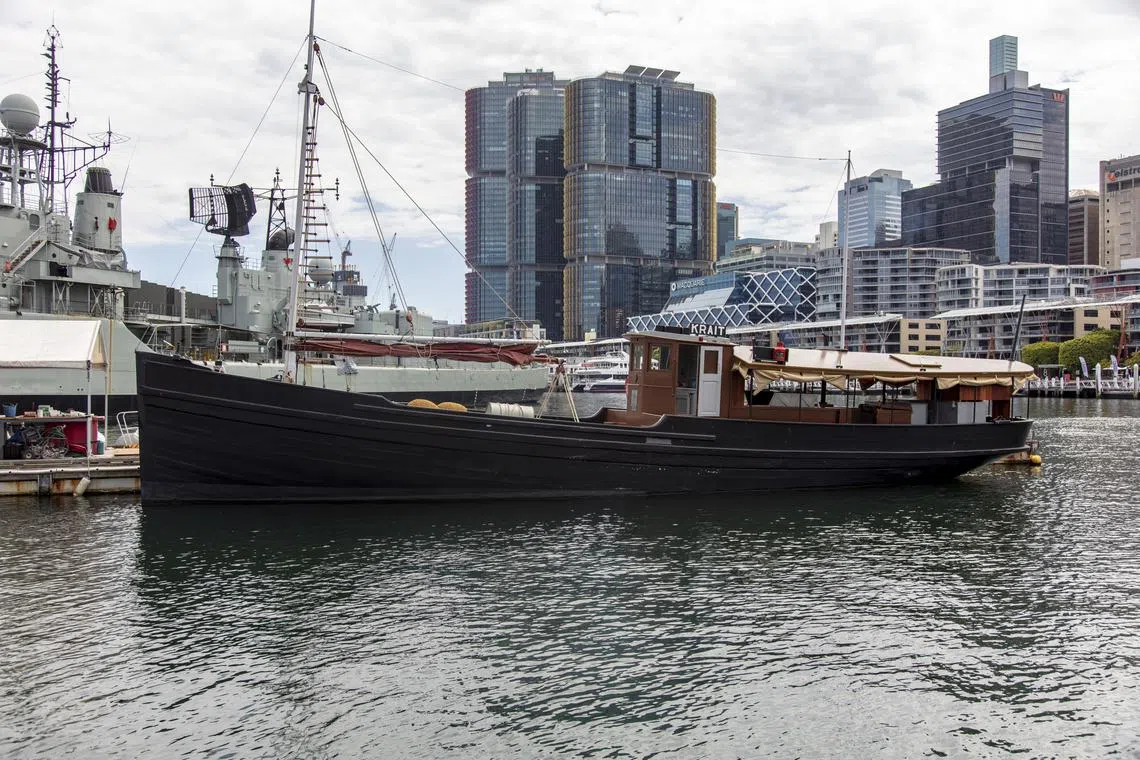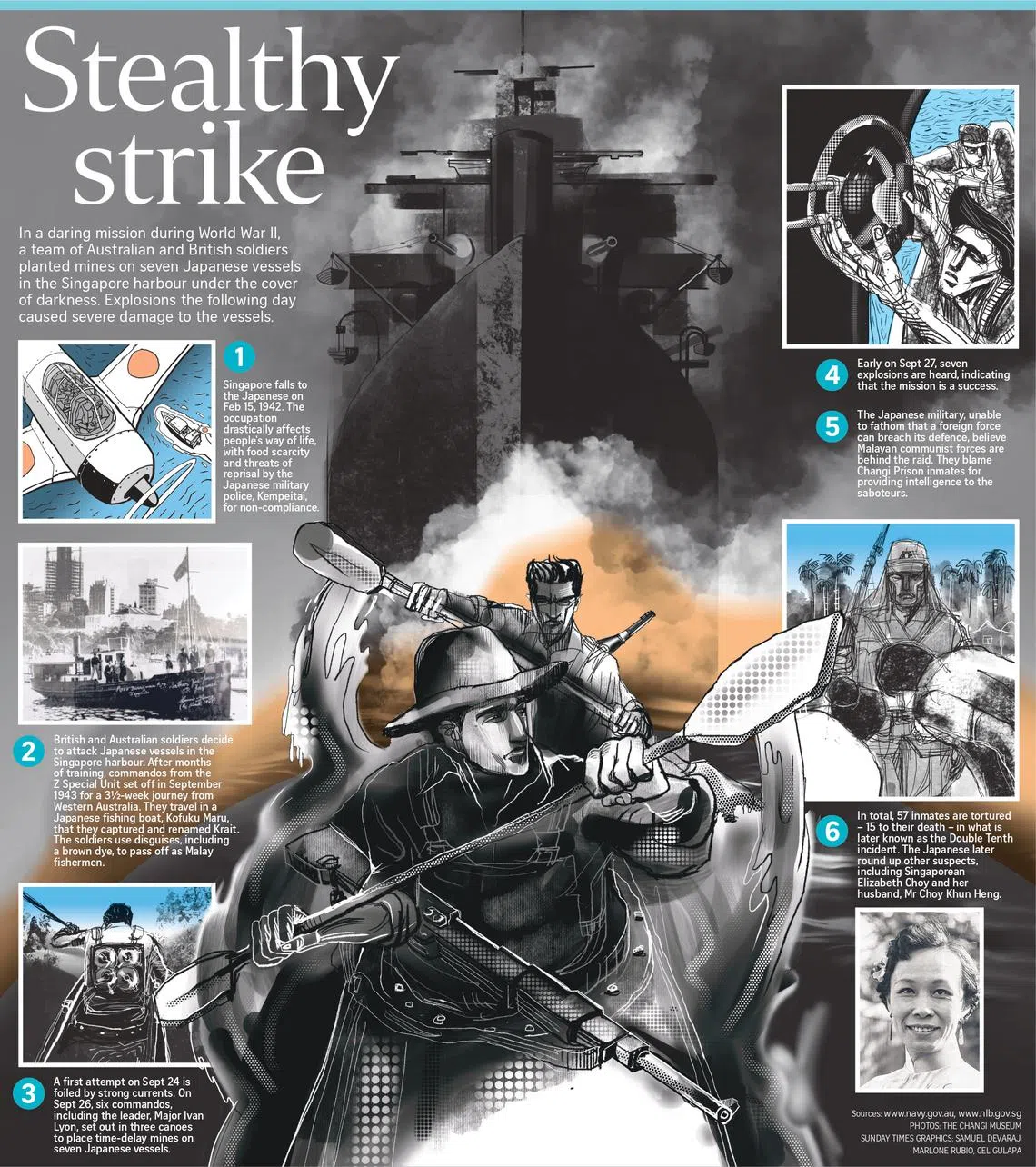Remembering Operation Jaywick: The WWII mission that sparked painful reprisals for S’poreans
Sign up now: Get ST's newsletters delivered to your inbox

Soldiers including the 14 Australian and British commandos and sailors from the Z Special Unit involved in Operation Jaywick.
PHOTO: AUSTRALIAN NATIONAL MARITIME MUSEUM
Follow topic:
SINGAPORE - A daring mission by Allied commandos during World War II damaged seven Japanese vessels in Singapore waters, but led to reprisals that saw a number of people here tortured and killed.
Among those rounded up in the aftermath of Operation Jaywick was Mrs Elizabeth Choy and her husband, Mr Choy Khun Heng. Mrs Choy, a teacher, was released only after 200 days of starvation and repeated torture.
She became a celebrated war heroine and returned to teaching after a short stint in politics.
She died of cancer in 2006 at the age of 95.
Operation Jaywick took place on Sept 26, 1943, more than a year after the Japanese occupied Singapore. It was carried out by a team of 14 Australian and British commandos and sailors from a group called the Z Special Unit.
Dr James Hunter, curator of naval heritage and archaeology at the Australian National Maritime Museum in Sydney, told The Straits Times that it was one of the first raids of its type carried out in the Pacific theatre.
The Japanese military had not been expecting Allied forces to launch an attack from Australia.
Said Dr Hunter: “It is actually quite significant in the fact that it was so successful and that nobody got killed or even wounded in the raid, which is remarkable.
“(That) they travelled so far, so deep into enemy territory, pulled off the mission and then were able to escape without being detected was just absolutely amazing.”
The expedition was led by Major Ivan Lyon, a British solider. The plan was to use a captured Japanese fishing vessel – the Kofuku Maru, which they renamed Krait, after a deadly snake found in India – to travel from Australia to Singapore.
They left Exmouth, in Western Australia, on Sept 2, 1943, and travelled through the Lombok Strait, across the Java Sea and along the south-west and western coasts of Borneo before going south towards Singapore.
To throw off the Japanese, the men wore sarongs and covered their bodies in dark make-up to disguise themselves as Malay fishermen.

A sarong used in Operation Jaywick as a disguise.
PHOTO: AUSTRALIAN NATIONAL MARITIME MUSEUM
Once they were at Pulau Panjang in the Riau Islands, six soldiers in three canoes paddled towards the Japanese vessels. They failed on their first attempt because the waters were too choppy.
On Sept 26, they got close to seven ships and attached time-delay limpet mines before paddling to the southern islands to rendezvous with the rest of the team.
Early on Sept 27, seven explosions were heard. The mission was a success.
The Japanese did not believe the Allies would carry out such an attack from bases in Australia and Britain because of the distance involved, said Mr Ian Li Huiyuan, an associate research fellow from the S. Rajaratnam School of International Studies.
“The physical feat of the operation was quite impressive, but this was also what led the Japanese to think it was actually done by local saboteurs,” he said.
“Their first thought would not have been that it was done by an Allied force, given how far their actual bases were.”

A fake Japanese flag that the soldiers onboard the Krait used to pass the vessel off as a Japanese one, as they entered Singapore waters during Operation Jaywick.
PHOTO: AUSTRALIAN NATIONAL MARITIME MUSEUM
Stunned by the setback, the Japanese military received information from the Johor branch of the Kempeitai, or military police, that foreign internees at Changi Prison had transmitted news to the raiding party.
Major Sumida Haruzo, chief of the Kempeitai, received orders to investigate and arrest those suspected of sabotage.
From Oct 10, a total of 57 inmates were detained and then tortured – including 15 men to their death – in what became known as the Double Tenth incident.
Others were also rounded up, including Mrs Choy, who was arrested on Nov 15.
The Allies received news that the Japanese suspected the local population was behind Operation Jaywick, but they chose to keep secret the fact that they were behind it, said Mr Li.
“Some say it was because they did not want to actually disclose to the Japanese that they had this ability to hit them,” he said.
Spurred by the success of Operation Jaywick, a second mission was conducted in 1944 against the Japanese – Operation Rimau. Unfortunately, all the operatives were killed or captured.
Dr Hunter said there is growing awareness of Operation Jaywick, which will be commemorated on Sept 26 at the Australian National Maritime Museum, where Krait currently sits.

Krait on display at the Australian National Maritime Museum.
PHOTO: AUSTRALIAN NATIONAL MARITIME MUSEUM
A sarong won by Mr Moss Berryman – the last surviving member of the crew, who was just 18 years old during Operation Jaywick – is also at the museum. Mr Berryman’s daughter gave the sarong to the museum following his death in August 2020.
Dr John Kwok, historian and co-founder of consultancy Total Heritage, said Operation Jaywick is a shared memory for Australia and Singapore despite it affecting the two countries differently.
He said: “The Japanese Occupation was a difficult period in (Singapore’s) history. But we should not narrowly just focus on the Occupation.
“Many things happened beyond the Occupation. There are these operations that fought back, the resistance against the Japanese that took place during that period.”



